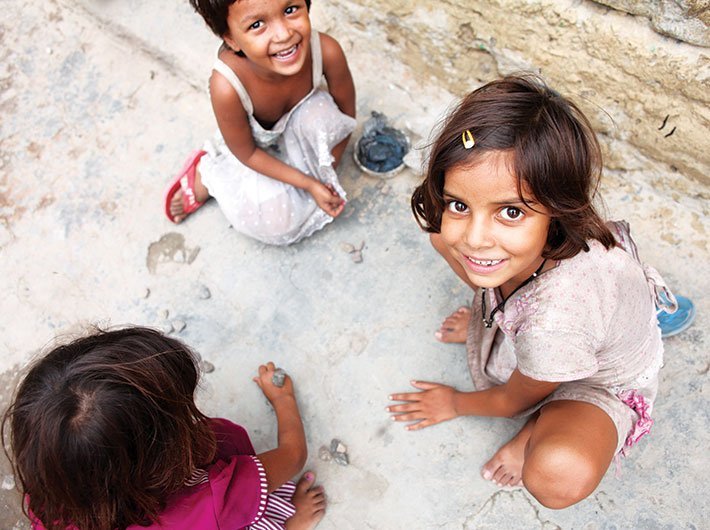The assumptions that women are not supposed to be good with mathematics or technology can have an impact on their and their parents’ decisions
A lot has been discussed and written over the absence of women from the Indian labour force, and how it affects the economic growth of the country. Even as it seemed the new millennium arrived with better days for women, the numbers tell a different story. Between 2004 and 2011, the Indian economy grew at a rate of 7 percent, and during the same period, female participation in the workforce fell by the exact same amount. In 2013, International Labour Organisation (ILO) ranked India 11th from the bottom in female workforce participation.
Five years down the road, is the picture a bit more promising? Doesn’t seem so.
The Annual Status of Education Report (ASER) released earlier this month does not give us much hope. The annual report by the Pratham Education Foundation assumes special significance, since the NGO switched from the age bracket 6 to 14 years to 14 to 18 years for the first time, for its 2017 report. This is the age bracket of the youth, who are ready to enter the labour force and start contributing to the economy.
How did the young women from 26 rural districts across 24 states fare in the survey?
The survey has once again highlighted a deep gender divide. By the time they’re reaching the age 14, our youth – and more young women than men -- are not equipped with the basic arithmetic and reading skills. More women than men cannot perform day-to-day tasks like counting money or reading instructions on an ORS packet and follow them.
Why are the young women falling behind?
The report presents an interesting insight into the social conditioning of these young women that nourishes the gender divide. It profiles a young woman called Rita from Gujarat. Rita had dropped out from school after standard VIII, while her brother studies in a private school in standard X, in a nearby village. She doesn’t want to study further and she does not want to work outside the home. The obvious and natural thing for Rita to do in the future is to get married and look after the house.
The report notes: “One could almost see from her body language that in her own mind, she had decided that anything that sounded even vaguely academic was not for her. Her stiff back and blank gaze suggested that this total rejection of everything connected with literacy and numeracy had roots going back many years into the past.”
This kind of conditioning of the young women that imbibes the idea in them that they are going to have to end up in someone’s kitchen can sway them away from learning. The assumptions that women are not supposed to be good with mathematics or technology can have an impact on their and their parents’ decisions. This can also be seen when it comes to the standard XII results. It has been a trend for several years now that more women manage to clear and do well in the board exams, but fewer of them make it to the institutes like the IITs. Nearly five percent of the youth surveyed by ASER are neither working, nor studying, nor preparing to work or study. Close to 75 per cent of them are young women. Even when it comes to having aspirations, young women express the desire to be in professions like nursing and teaching, while young men want to pursue a career in engineering or military services. The root of this clear divide lies in the stereotypical classification of women as delicate, domestic and less smart.
One of the reasons for young women’s reluctance to enrol for higher education is that they may have to move away from home, or commute longer distances. The U-DISE data for 2015-16 shows that the number of secondary grade schools in India reduces to 14 for every 100 elementary schools. For grade XI and XII, it reduces to six.
Another alarming fact that has come out of the survey is that 40 percent of the surveyed youth did not have any role model in their mind for the profession they aspired to pursue. It is not surprising, especially in case of the young women. The feeling of obligation towards their family, kids and domestic chores is a thorn in the way of many working women, and it does take a toll on their careers. The equal division of labour and responsibilities between partners is still a distant dream for majority of working women. This can make women slow down the pace of their progress and make the list of successful women shorter or can lead to under-representation of their relative success – resulting in the dearth of role models for women.
Some of the highlights of the survey that explain the gender divide are as following:
• With age, the gender gap in the enrolment expands. While at the age 14, it is insignificant; by age 18, there are 4.3 percent more girls than boys, who have not enrolled in the formal education system.
• Among the girls who were not currently enrolled, the largest proportion, close to 33 percent mentioned their family's hesitation to let them study further. Reasons included worries about distance and security.
• The percentage of women, who did not even attempt to answer, was higher than that for men.
• Girls have far lower access to computer and internet as compared to boys. While 49 per cent of young men have never used the internet, close to 76 percent of females have never done so.
In order to change this picture, along with availability of opportunity, access to the opportunity has to be ensured too. Getting over our gender biases should be step one, and ensuring safety of women has to be the step two. Embracing technology and modernity can help these women go a long way.

